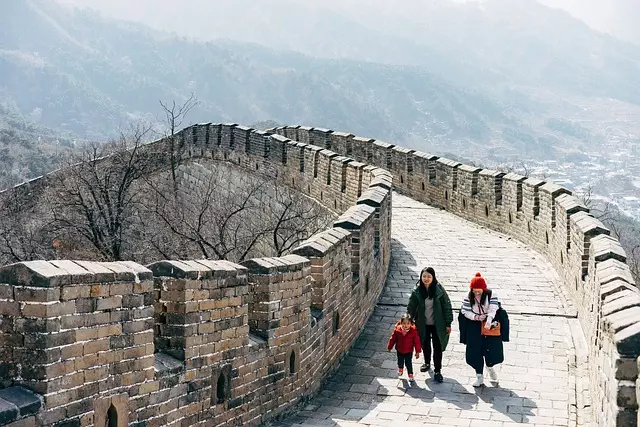Connecticut offers a rich tapestry of history and culture for those looking to explore its best places to visit. An ideal starting point is the Hartford area, home to the Mark Twain House & Museum, which provides a deep dive into the life of Samuel Clemens. The state's historical journey continues through its numerous museums and societies, each detailing different facets of Connecticut's narrative from its colonial beginnings to the Industrial Revolution. Key historical attractions include the Mystic Seaport and the National Historic Landmarks of Wethersfield and Windsor. For art enthusiasts, the Wadsworth Atheneum Museum of Art in Hartford showcases American art history. Beyond its historical significance, Connecticut's natural beauty and vibrant arts scene enrich the visitor experience. Scenic walks in Greenwich and views from Castle Craig in New Haven are complemented by towns that blend heritage, architecture, and cultural festivals. An Connecticut travel guide will point out these diverse experiences, making the state a top choice for those seeking both cultural enrichment and historical education among the best places to visit in Connecticut. The state's central role in the American Revolution, with sites like the Old State House and Fort Griswold, leaves a lasting impact on its identity. Museums such as the Lyman Alfred Museum and reenactments at Yorktown Battlefield bring the colonial era to life, ensuring that Connecticut's historical legacy remains an integral part of its cultural tapestry for visitors and residents alike.
Connecticut’s legacy is a mosaic of historical significance and cultural richness, woven intricately into the fabric of its landscape. This article serves as a comprehensive exploration of the Nutmeg State’s past and present, offering an engaging journey through its history, culture, and natural beauty. From its pivotal role in early American settlements to its transformation during the Industrial Revolution, Connecticut’s story is one of resilience and innovation. As we traverse the state’s historical landmarks and delve into its vibrant cultural scene, it becomes clear why an Connecticut travel guide is indispensable for anyone seeking to understand this unique region’s charm. Discover the best places to visit in Connecticut, from the maritime wonders of Mystic Seaport to the intellectual corridors of Yale University, and indulge in the local culinary delights that make Connecticut a culinary destination. Whether you’re a history buff, cultural enthusiast, or nature lover, there are myriad things to do in Connecticut that will leave you with lasting memories. Join us as we uncover the layers of history and the vibrant culture that make up the essence of this diverse state.
- Exploring Connecticut's Rich Past: A Historical Journey Through Time
- – The Founding Era: Connecticut's Role in the Colonial Period
- – The American Revolution and Its Impact on Connecticut
Exploring Connecticut's Rich Past: A Historical Journey Through Time

Connecticut’s history is as layered and diverse as its landscape, offering visitors a glimpse into the past through its well-preserved historical sites and museums. An ideal starting point for any Connecticut travel guide is the Hartford area, where one can explore the Mark Twain House & Museum, a window into the life of America’s great writer and satirist. History buffs will find plenty to engage with in the state’s many historical societies and museums, each telling a unique story of the region’s pivotal moments from colonial times to the Industrial Revolution. The best places to visit in Connecticut for a deep dive into its heritage include the Mystic Seaport, which brings to life the maritime history of New England, and the historic towns of Wethersfield and Windsor, both designated as National Historic Landmarks.
As one ventures beyond the historical artifacts, the things to do in Connecticut reveal a rich tapestry of cultural experiences. In places like Lyme and Old Saybrook, visitors can enjoy the natural beauty that has inspired artists for generations. The state’s vibrant arts scene is also on full display at institutions such as the Wadsworth Atheneum Museum of Art in Hartford, one of the oldest public art museums in the United States. Meanwhile, the charming towns and cities across Connecticut offer a blend of colonial architecture, historic sites, and cultural festivals that celebrate the state’s diverse heritage. Whether it’s strolling through the picturesque streets of Greenwich or enjoying the panoramic views from atop the imposing Castle Craig in New Haven, every corner of Connecticut holds a piece of its storied past waiting to be explored.
– The Founding Era: Connecticut's Role in the Colonial Period

Connecticut’s history stretches back to the colonial period, a time when its strategic location between New York and Boston made it a focal point for trade and conflict. As settlers arrived in the 17th century, they established towns that would become key in the region’s development. The Connecticut Charter of 1662, granted by King Charles II, laid the foundation for its governance and autonomy, which played a significant role in shaping the state’s identity. During the American Revolution, Connecticut was a stronghold of resistance against British rule, with key battles fought on its soil, such as the Battle of Groton Heights. This period of American history is vividly brought to life at places like the Webb-Deans House in Windsor, which serves as an excellent stop for those consulting an Connecticut travel guide seeking a deeper understanding of the colonial era.
Fast forward to today, and the legacy of Connecticut’s Founding Era is preserved and celebrated throughout the state. History enthusiasts will find themselves immersed in the past at sites like the Old State House in Hartford, which offers a glimpse into the governance of the early United States. For those looking for things to do in Connecticut that blend culture with history, the Mark Twain House & Museum in Hartford is a must-visit, providing insight into the life of one of America’s most renowned authors and a significant figure in Connecticut’s cultural heritage. The state’s commitment to preserving its rich tapestry of history means that it offers a wealth of attractions for travelers following an Connecticut travel guide, ensuring that each visit is both informative and engaging.
– The American Revolution and Its Impact on Connecticut

Connecticut’s pivotal role in the American Revolution is a testament to its historical significance and enduring cultural heritage, making it a compelling destination for any Connecticut travel guide. The state was a hotbed of revolutionary fervor, with key battles fought on its soil, most notably the Battle of Groton Heights and the capture of Fort Griswold, which underscored the state’s resilience and commitment to American independence. These events not only shaped the nation’s future but also left a lasting impact on Connecticut’s identity, contributing to the diverse array of historical sites across the state that are often highlighted in the best places to visit in Connecticut. For history enthusiasts, places like the Lyman Alfred Museum in New Haven and the Webb-Deane-Stevens Museum in Simsbury offer insights into the period, while the Yorktown Battlefield in Westchester County, New York, just across the state line, provides additional context to the Revolutionary War efforts of Connecticut’s soldiers. Beyond these sites, the state’s history is interwoven with its many towns and cities, each offering unique things to do that reflect the era, from reenactments and living history museums to educational exhibits and guided tours. These experiences are not just a nod to the past but also a vibrant part of Connecticut’s cultural fabric, ensuring that visitors and residents alike can engage with the state’s storied legacy in meaningful ways.
